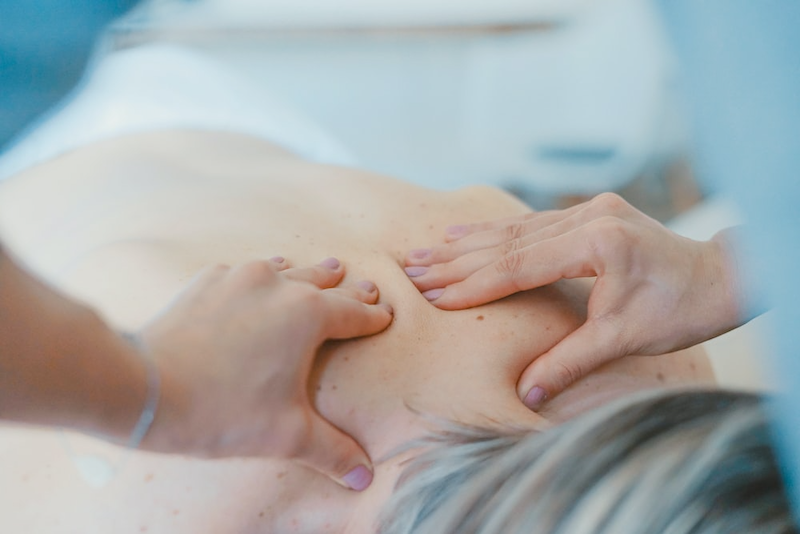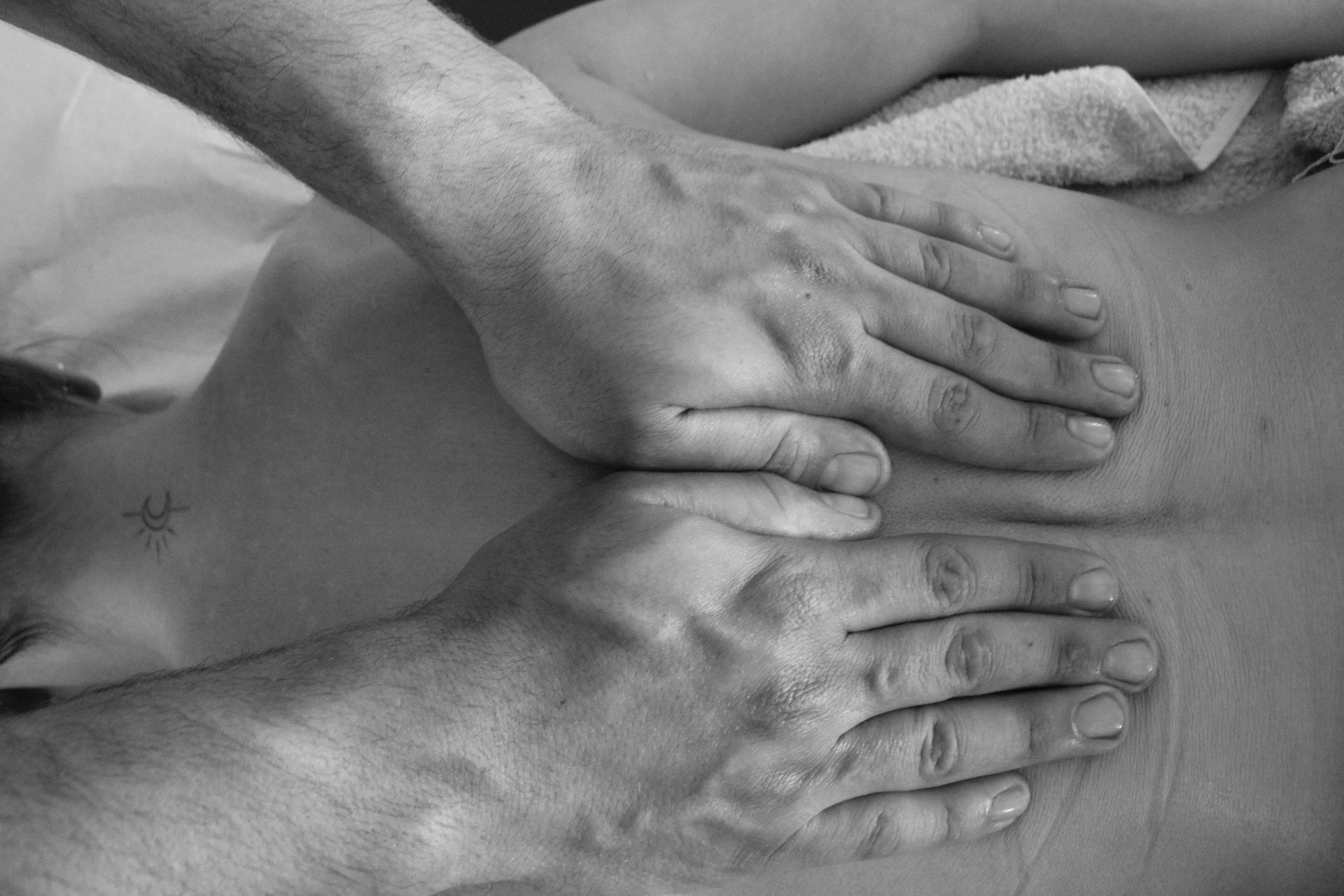
Rolfing Structural Integration in Boulder, Denver & Castle Rock
Relieve Pain • Improve Alignment • Move with Ease
Rolfing® Structural Integration is a specialized form of hands-on, fascia-focused bodywork designed to restore balance, reduce pain, and improve how the entire body moves in gravity. At Aligned Body Integration, Scott offers a therapeutic approach grounded in deep fascial work, movement education, and nervous-system awareness, helping clients experience long-lasting structural change rather than temporary relief.
Whether you’re navigating chronic pain, recovering from injury, improving athletic performance, or simply wanting to feel more aligned in your physical body, Rolfing helps you reconnect to ease, strength, and fluid motion.
What Is Rolfing® Structural Integration?
Rolfing® Structural Integration is a form of bodywork that reorganizes and balances the body’s connective tissues—called fascia—which surround, support, and shape the whole body. Developed by Dr. Ida Rolf, Rolfing aims to realign and balance the body so you can move more efficiently and comfortably in everyday life.
Fascia is a continuous, three-dimensional web that surrounds muscles, bones, nerves, organs, and joints. When it becomes restricted from injury, posture, repetitive strain, emotional stress, or chronic tension, it can alter your body structure, movement patterns, and even how you breathe. Rolfing works by manipulating fascia, releasing long-held restrictions, and restoring more natural alignment.
This approach is very different from traditional massage therapy. Rolfing is not focused on short-term relaxation — it is a therapeutic, long-term approach to structural balance and improved function.
How Is Rolfing Different from Massage Therapy?
While massage therapy often addresses local muscle tension or relaxation, Rolfing works with the entire body system by:
targeting connective tissue and fascia, not just muscles
releasing deep patterns that influence posture and movement
improving body alignment, upright posture, and mobility
integrating movement education into the session
addressing structural imbalances rather than symptoms
guiding the body toward long-term change
Rolfing practitioners use a combination of deep tissue manipulation, soft tissue manipulation, specific manual techniques, and positional work to improve how the body organizes itself.
Clients frequently report improvements in flexibility, better posture, reduced pain, increased mobility, and a deeper sense of connection to their physical experience.
Many people ask whether Rolfing is the same as myofascial release. While they share similar roots — and early myofascial release was developed by practitioners trained in Rolfing concepts — Rolfing Structural Integration works with the entire fascial network to improve whole-body balance. Myofascial release focuses on local soft tissue manipulation, while Rolfing integrates those techniques into a broader structural framework that supports alignment, movement, and long-term change.”
The Science Behind Rolfing
Modern fascia research has shown that:
fascia is richly innervated and responds to manual pressure
restrictions in fascia can contribute to chronic conditions
releasing fascial tension may alleviate chronic stress patterns
connective tissue plays a major role in movement efficiency
fascia surrounds and organizes body segments and joints
Rolfing’s emphasis on restoring structural balance and improving movement aligns with contemporary findings in biomechanics and somatic therapy.
Although not a replacement for physical therapy or medical treatment, Rolfing is considered a complementary therapy that can support healing, function, and overall wellness.
What Does Rolfing Do?
Rolfing aims to:
release tension
alleviate pain and chronic conditions
improve mobility
correct misalignments
enhance fluid motion
support upright posture
improve athletic performance
reduce compensatory movement patterns
restore natural balance through the entire body
Clients often describe the results as feeling:
lighter
more grounded
more aligned
more aware of their movement
more connected to their breath and body

Who Can Benefit from Rolfing?
Chronic Pain & Long-Term Tension
Rolfing can help alleviate chronic pain such as:
back and neck pain
TMJ dysfunction
migraines
sciatic pain
plantar fasciitis
frozen shoulder
whiplash injuries
hip and knee tension
repetitive strain injuries
carpal tunnel
fibromyalgia-related tension
Rolfing addresses root causes, not just symptoms, by improving body structure and movement patterns.
Posture & Structural Issues
Rolfing is effective for addressing:
scoliosis
spinal curvature (kyphosis or lordosis)
forward-head posture
pelvic imbalances
poor posture from sitting or screen time
structural imbalances from injury
By reorganizing fascia and improving movement, clients experience improved posture and greater comfort in daily life.
Athletes & Active Individuals
Rolfing therapy supports:
improved athletic performance
better movement efficiency
increased mobility
faster recovery
more balanced movement mechanics
reduced injury risk
Rolfing complements other treatments by improving whole-body integration and function.
Rolfing can also significantly improve range of motion by reducing fascial restrictions, restoring balanced movement, and allowing joints to move more freely. This increased mobility helps athletes generate more power, recover faster, and move with greater efficiency in training and daily life.
Emotional Stress & the Body
Fascial restrictions can be influenced by emotional stress and long-held protective patterns. Rolfing helps unwind these tensions to create space for:
deeper breath
greater ease
improved nervous-system regulation
more embodied awareness
Rolfing doesn’t just change the physical body — it supports how you feel in your body.
What to Expect in a Rolfing Session
Sessions last 60–90 minutes. You remain clothed (athletic shorts, tank top, or sports bra recommended) while the practitioner uses:
hands
knuckles
elbows
slow, steady pressure
gentle movement cues
breath-synchronized techniques
soft tissue and deep manipulation
Sessions focus on releasing tension, improving alignment, and reorganizing the physical structure so the body can move more freely.
This is not a spa massage — it is an interactive process supporting long-term change through awareness and whole-body integration.
Does Rolfing Hurt?
Rolfing should never be painful.
Sensations can be:
deep
intense
stretching
unwinding
pressure-based
—but always within your comfort.
Your practitioner adjusts techniques to your tolerance, ensuring the process is safe, supportive, and attuned to your body.

The Rolfing Ten Series
Many clients choose the Ten Series, a structured progression developed by Dr. Ida Rolf to reorganize the body through:
Breath & superficial fascia
Foot arches & lower legs
Lateral body line
Inside line of the legs
Core access: psoas & deep front line
Back line & sacrum
Neck, head, & jaw
Lower body integration
Upper body integration
Whole-body integration & balance
This framework systematically addresses body parts, body segments, and fascial planes for deep, lasting change.
Is Rolfing Safe?
Rolfing is generally safe for most people when performed by a Certified Rolfer or Certified Advanced Rolfer trained through the Ida Rolf Institute.
At ABI, Scott & Carolyn bring:
15 years of hands-on experience
Certification through the Dr. Ida Rolf Institute
Craniosacral therapy training
Additional complementary therapies
Experience with athletes, chronic pain, and complex cases
A warm, grounded, trauma-informed presence
Rolfing is adaptable for different conditions and body types, and your safety and comfort guide every session.
How Many Sessions Do You Need?
While single sessions are beneficial, deeper change develops over time.
Most clients choose:
Single session: targeted relief or movement refinement
3–5 sessions: focused improvements in posture and mobility
Ten Series: whole-body transformation and integration
Ongoing sessions: maintenance for active bodies or chronic conditions
Why Choose Aligned Body Integration?
At ABI, you benefit from a team of two deeply experienced practitioners who bring different strengths to the work, allowing you to receive the exact type of care your body needs.
Scott — Certified Rolfer™ & Structural Integration Specialist
Scott specializes in:
Rolfing Structural Integration
Fascial manipulation
Somatic awareness
Movement education
Craniosacral therapy
Nervous-system regulation
Trauma-informed touch
15+ years of professional experience
Scott’s sessions blend deep structural work and intuitive somatic guidance, offering a grounded, attuned, and transformative approach to relieving chronic tension and improving whole-body alignment.
Carolyn — Certified Rolfer™ & Lymphatic Specialist
Carolyn brings a warm, nurturing approach with advanced training in:
Rolfing Structural Integration
Lymphatic Drainage Therapy (LDT 1–3)
Brazilian Lymphatic Drainage Massage
Visceral Manipulation (VM 1–2)
Reiki Mastery
Somatic & restorative bodywork
15+ years of experience
Her work is especially supportive for those needing gentler structural work, lymphatic recovery, or a more restorative approach to healing.
Together at ABI
You receive:
trauma-informed care
advanced clinical training
deep structural expertise
restorative and lymphatic options
customized sessions
a welcoming, grounded environment
two practitioners with complementary gifts
Ready to Experience Rolfing?
If you’re ready to move better, feel lighter, reduce pain, and reconnect with your body:
📍 Boulder
📍 Denver
📍 Castle Rock
Schedule your Rolfing session today.
Your body will thank you.
